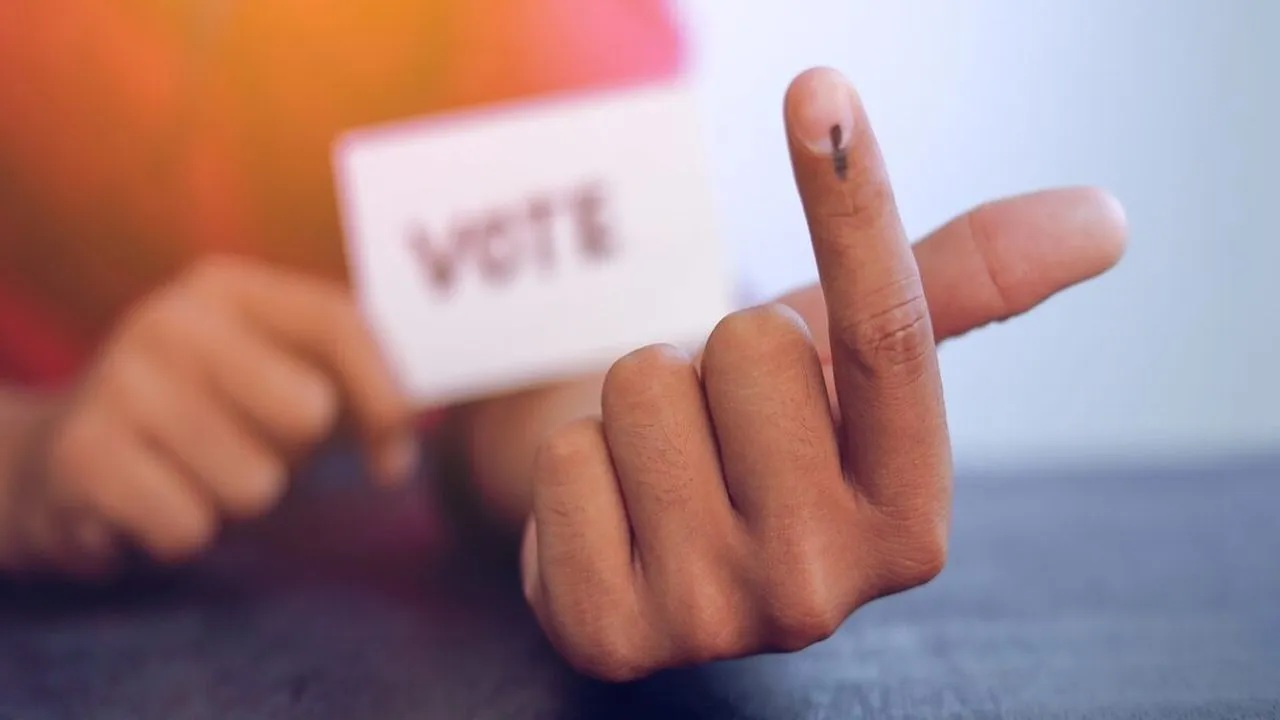Copyright thesouthfirst

Countdown to December: Kerala’s local body polls to test fronts ahead of 2026 showdown Counting of votes will take place on 13 December, with the entire election process to be completed by 18 December. The model code of conduct is already in force, freezing new announcements as campaign engines start up in panchayats and city wards across the State. Synopsis: Kerala is set for a high-stakes political contest this December, with the State Election Commission announcing the schedule for the local body polls. The elections, to be held in two phases across 1,199 local bodies and 23,576 wards, will serve as a crucial litmus test ahead of the 2026 Assembly polls just a few months later. For the LDF, the polls are a test of strength after five years of dominance. For the UDF, they represent an opportunity to ride an anti-incumbency wave and stage a comeback. For the BJP, it is a chance to demonstrate whether its growing urban presence can translate into local power. Kerala is entering another high-stakes electoral season, with the State Election Commission (SEC) announcing the schedule for the 2025 local body polls, an exercise widely seen as setting the tone for the 2026 Assembly elections. The election notification will be issued on 14 November for 1,199 local bodies covering 23,576 wards, including 941 grama panchayats, 152 block panchayats, 14 district panchayats, 86 municipalities and six corporations. The last date for filing nomination papers is 21 November, and scrutiny will take place on 22 November. The deadline for withdrawing nominations is 24 November. Voting will be held in two phases: on 9 December in the southern districts – Thiruvananthapuram, Kollam, Pathanamthitta, Alappuzha, Kottayam, Idukki and Ernakulam – and on 11 December in the remaining seven districts – Thrissur, Palakkad, Malappuram, Kozhikode, Wayanad, Kannur and Kasaragod. Counting of votes will take place on 13 December, with the entire election process to be completed by 18 December. The model code of conduct is already in force, freezing new announcements as campaign engines start up in panchayats and city wards across the State. With just a month to go before polling, Kerala’s political fronts—the ruling Left Democratic Front (LDF) led by the Communist Party of India (Marxist) [CPI(M)], the opposition United Democratic Front (UDF) led by the Congress, and the Bharatiya Janata Party (BJP)-led National Democratic Alliance (NDA)—are preparing for a fierce grassroots battle. Also Read: One state, 2 commissions and 14 confused collectors LDF faces grassroots test, UDF eyes comeback, BJP hopes for bigger presence The local body elections are expected to further raise Kerala’s political temperature. The results will not only decide who governs at the grassroots but will also serve as a litmus test ahead of the 2026 Assembly election. For the LDF, the upcoming local body polls are a test of strength after five years of dominance. It is about consolidating its grassroots hold and defending its welfare narrative. In the 2020 local body elections, held amid the COVID-19 pandemic, the LDF secured a landslide, sweeping corporations, municipalities and all tiers of the panchayat system. That victory paved the way for its historic Assembly re-election in 2021. Five years later, the 2025 local polls will test whether the Left can retain its deep-rooted control over grassroots governance. For the UDF, it is a crucial opportunity to prove that the Lok Sabha trend was not a one-off, and to see whether the front can ride an anti-incumbency wave to stage a comeback. For the BJP, it is a moment to show whether its expanding urban presence can translate into local power and help it carve out a stronger space, particularly in the Thiruvananthapuram Corporation – its key target this time. Either way, Kerala’s battle for the grassroots has begun, and the countdown to December promises a political showdown of major proportions. LDF: Riding on welfare and development credentials The ruling LDF, led by Chief Minister Pinarayi Vijayan, remains confident that its welfare-driven governance model and local-level development initiatives will once again resonate with voters. Party Secretary MV Govindan said, “LDF will win big in the local elections. We will secure more seats than last time. The Front is well-prepared, and candidate selection is complete.” LDF convener TP Ramakrishnan echoed this optimism, saying that public sentiment remains firmly with the Left. The Front plans to highlight the increase in welfare pensions from ₹1,600 to ₹2,000 and showcase its achievements in infrastructure and social welfare. In 2020, the LDF ruled five of the six corporations, 44 of 87 municipalities, 11 of 14 district panchayats, 113 of 152 block panchayats and 571 of 941 grama panchayats. The CPI(M) is keen to retain this dominance and is also aiming to wrest Kannur Corporation, the only one under UDF control. Also Read: After Tamil Nadu, Kerala to move Supreme Court against ‘unscientific and ill-intentioned’ SIR UDF: Banking on anti-incumbency and ‘charge sheet’ campaign The UDF, buoyed by its strong performance in the 2024 Lok Sabha elections, is banking on anti-government sentiment to propel it forward. Leader of the Opposition VD Satheesan said the UDF would turn the polls into a referendum on the LDF’s nine-year rule. “The UDF will win a resounding victory in the local body elections. We are not just a front, but a team, contesting as one. This is not merely an election for local bodies but a trial of this government in the people’s court,” Satheesan said. The Congress-led front has prepared a ‘charge sheet’ outlining the LDF government’s alleged failures, particularly in municipalities under Left control. A foot march is planned across panchayats to take these issues to the people. Seat-sharing and candidate selection, according to Satheesan, have been completed well in advance to give the front a head start in campaign mobilisation. NDA: Eyeing Thiruvananthapuram, pitching ‘development and double engine’ The NDA is positioning itself as the “development alternative” to both major fronts. With former Union Minister Rajeev Chandrasekhar taking charge as the new State BJP president, the party is treating this election as a launchpad for its next phase of expansion in Kerala. The Thiruvananthapuram Corporation, where the BJP believes it has a substantial urban voter base, remains its key battleground. The party has announced its first list of 67 candidates, featuring prominent names such as former DGP R Sreelekha, Asian Games medallist and former Sports Council chief Padmini Thomas, and BJP State secretary VV Rajesh. “The NDA is contesting with a clear message. We will place before the people the development crisis Kerala faces today and propose permanent solutions,” former BJP State president K Surendran said. “The massive central assistance to local bodies over the past decade will be highlighted, along with how the LDF and UDF have denied its benefits to the people.” The BJP has prepared two manifestos—one at the State level and another regional—incorporating feedback from students, farmers and entrepreneurs. The party also plans to expose what it calls the “duplicity” of both the Left and Congress fronts on key issues such as the PM-SHRI school scheme. Also Read: Locked homes, absent voters: Confusion and fear cloud Kerala’s SIR as voter verification begins Tracing Kerala’s journey of local democracy The evolution of Kerala’s local self-governance has been a remarkable journey of democratic decentralisation and institutional reform. The roots of this process trace back to 1953, when the first local government elections were conducted under the Travancore-Cochin Panchayat Raj Act of 1950. In 1957, the Administrative Reforms Committee recommended a two-tier system comprising gram panchayats and district councils, marking a decisive step towards grassroots empowerment. Following the formation of Kerala State, the unified Panchayat Municipality Act of 1960 laid the foundation for a structured local administration, dividing it into Panchayat and Municipality departments. Subsequent elections in 1963, 1979 and 1988 reflected the State’s steady movement towards strengthening local institutions. A major milestone came with the enactment of the Kerala Panchayat Raj Act and the Kerala Municipality Act of 1994, following the 73rd and 74th Constitutional Amendments. These Acts established a three-tier Panchayati Raj system and empowered urban local bodies, overseen by the Kerala State Election Commission, which was constituted on 3 December 1993 under Article 243K of the Constitution of India. The Commission conducted its first general local body elections in 1995, covering 990 gram panchayats, 152 block panchayats, 14 district panchayats, 55 municipalities and three corporations. Since then, general elections have been held in 2000, 2005, 2010, 2015 and 2020, along with several by-elections and special polls, including the 2021 special elections and the 2022 Mattanur municipal election. The scale, structure and representation of the exercise The elections will be held simultaneously for gram panchayats, block panchayats, district panchayats, municipalities and corporations, ensuring a massive democratic exercise across rural and urban Kerala. The State currently has 941 gram panchayats, 152 block panchayats and 14 district panchayats, forming the three-tier panchayat system. In addition, there are 87 municipal councils and six municipal corporations functioning as urban local bodies. Among the districts, Malappuram has the highest number of local bodies at 122, followed by Ernakulam and Thrissur with 111 each. Wayanad, with 31 local bodies, has the fewest. Reservation of wards has been fixed under five categories: Women, Scheduled Caste (SC) Women, Scheduled Caste (SC), Scheduled Tribe (ST) Women and Scheduled Tribe (ST). Women enjoy 50 percent reservation in every local body, while reservations for SC and ST categories are determined in proportion to their population. To ensure voter convenience, one or more polling stations will be set up in each ward. Each polling station will cater to a maximum of 1,200 voters in gram panchayats and 1,500 voters in municipalities and corporations. As elections are conducted simultaneously across the three tiers of panchayats, no separate polling stations are required for block or district panchayat elections. Also Read: Why Congress is fielding former MLA KS Sabarinathan for Thiruvananthapuram mayor Election machinery, rules and expenditure limits in place Each polling station will have a Presiding Officer and three Polling Officers. Around 1.8 lakh officers will be deputed for polling duties and the distribution of materials, apart from security personnel. All polling officials will undergo training before election day. The SEC will use Electronic Voting Machines (EVMs) manufactured by the Electronics Corporation of India Limited (ECIL), Hyderabad. A total of 50,693 control units and 1,37,922 ballot units have been readied for the polls under the supervision of ECIL engineers. Each ballot unit can accommodate up to 15 candidates. In cases where there are more than 15 contestants, an additional ballot unit will be installed. The SEC has mandated that only three escort vehicles will be permitted within a 100-metre radius of the office where candidates file their nominations. Inside the Returning Officer or Deputy Returning Officer’s room, only five persons, including the candidate, will be allowed. The Commission has also fixed spending limits for candidates as follows: Grama panchayat – ₹25,000 Block panchayat – ₹75,000 District panchayat – ₹1,50,000 Municipality – ₹75,000 Corporation – ₹1,50,000 All contesting candidates must submit a detailed election expenditure statement to the respective local body secretary within 30 days of the result declaration. Accounts can also be filed online through the Election Expenditure module. The statement must include all expenses incurred by the candidate, their agent, or anyone else on their behalf, along with self-attested copies of receipts and vouchers. Candidates are required to retain the originals for inspection if needed. Failure to submit accounts, exceeding expenditure limits, or providing false information can lead to disqualification for five years from the date of the Commission’s order. Revised rolls, record electorate and a decisive December ahead Following the recent delimitation process, the total number of wards in Kerala’s local bodies has increased from 21,900 to 23,612 across 1,200 local bodies. The electoral roll was revised twice—in August and October 2025—to reflect the changes brought about by the new ward boundaries. The roll prepared in August was published again in draft form on 29 September, and the final list was released on 25 October. The final electoral roll includes 2,84,30,761 voters, comprising 1,34,12,470 males, 1,50,18,010 females and 281 transgenders. An electoral roll for Non-Resident Indians (NRIs) has also been prepared, listing 2,841 voters – 2,484 males and 357 females. A total of 33,746 polling stations will be set up across the State to ensure smooth and accessible voting. With voting scheduled for December, the battle lines are now sharply drawn among the LDF, the UDF and the BJP – each eyeing a mandate that could shape not just local governance but also the political mood ahead of the 2026 Assembly polls. Whether voters will reaffirm continuity, demand change or open the door for a new political narrative remains to be seen. What is certain, however, is that the verdict from Kerala’s villages and cities this December will set the tone for the Assembly election just months away. Also Read: Poll-ready Kerala becomes first state to digitally redraw every local body ward Women to lead nearly half of Kerala’s local bodies Women are set to occupy nearly half of the top posts across Kerala’s panchayats, municipalities and corporations in the upcoming local body elections. Of the 941 Gram Panchayat president posts, 417 are reserved for women, including 46 for Scheduled Caste women and eight for Scheduled Tribe women. Among the 152 Block Panchayat president posts, 67 are reserved for women, of which eight are for Scheduled Caste women and two for Scheduled Tribe women. All seven district panchayats in Thiruvananthapuram, Kollam, Pathanamthitta, Idukki, Thrissur, Kozhikode and Wayanad have reserved the president’s post for women. In Ernakulam, the district panchayat president’s post is reserved for a Scheduled Caste woman. In the urban sector, 44 of the 87 municipalities will have women chairpersons, while six are reserved for Scheduled Castes and one for Scheduled Tribes. Among the six corporations, Kochi, Thrissur and Kannur will have women chairpersons. In local bodies where the top post is not reserved for women, the vice-chairperson’s position has been set aside for them, ensuring their continued presence in leadership roles across Kerala’s three-tier local governance system. (Edited by Dese Gowda)



